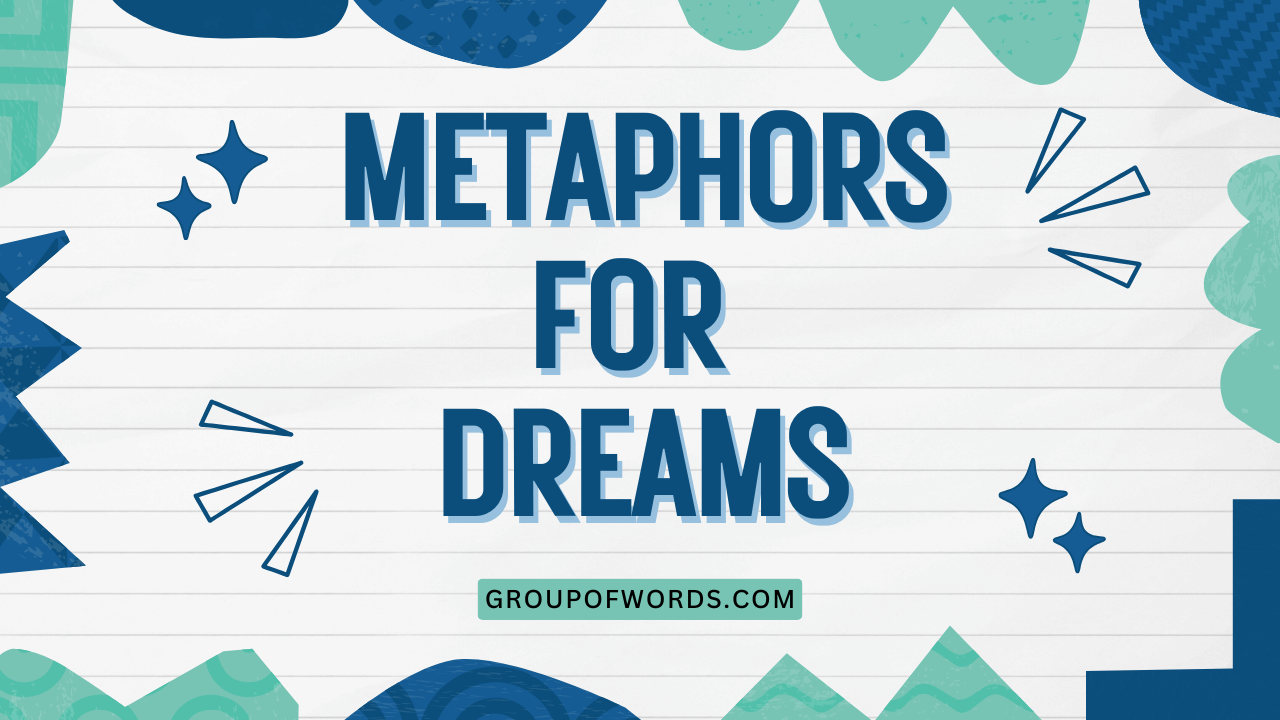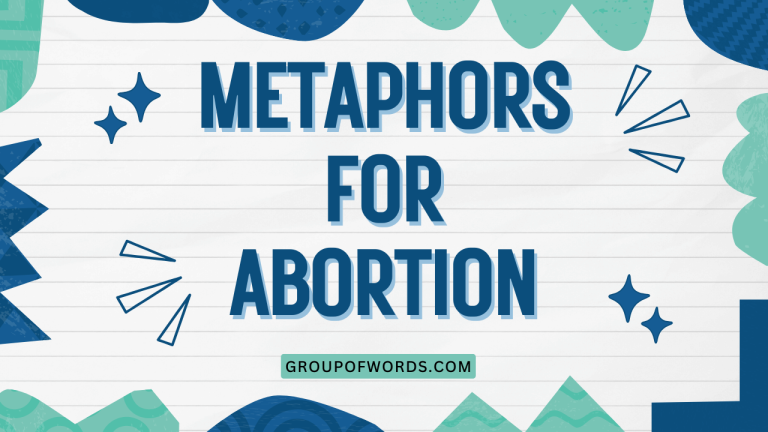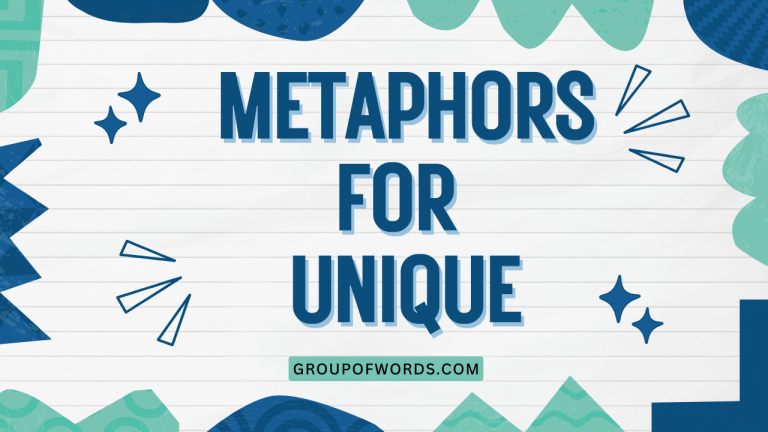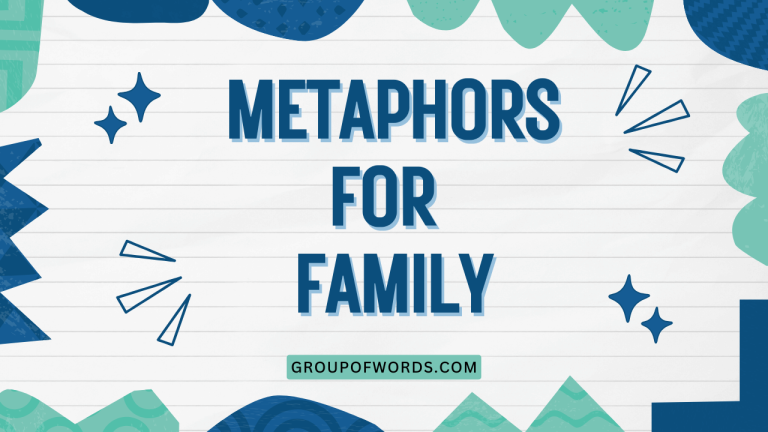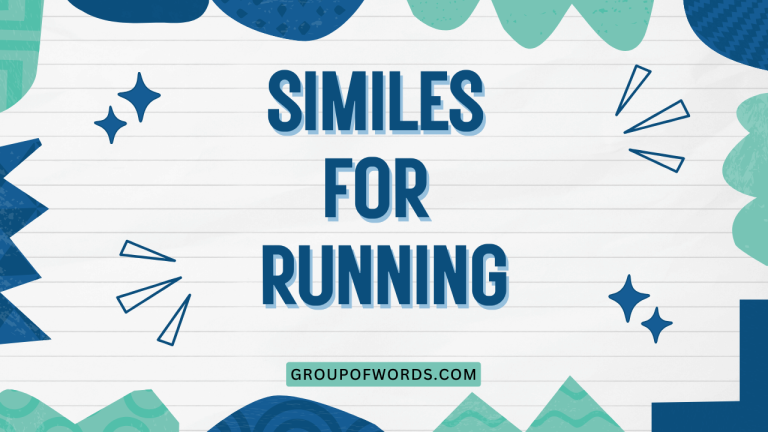Dream Weavers: Mastering Metaphors for Dreams in English
Dreams, those enigmatic nocturnal narratives, have captivated humanity for millennia. Understanding how we talk about dreams—the metaphors we use—is crucial for both comprehending literature and expressing our own subconscious thoughts.
This article delves into the fascinating world of metaphors for dreams, exploring their grammatical structure, diverse categories, and practical usage. Whether you are an English language learner, a literature enthusiast, or simply curious about the language of dreams, this comprehensive guide will equip you with the knowledge and tools to navigate this rich linguistic landscape.
By exploring the common metaphors used to describe the nature, experience, and significance of dreams, we will enhance our ability to interpret and articulate these often-elusive mental phenomena. This exploration will include detailed examples, structural breakdowns, usage rules, and practice exercises, ensuring a thorough understanding of the topic.
So, let’s embark on this journey into the metaphorical realm of dreams!
Table of Contents
- Definition of Metaphors for Dreams
- Structural Breakdown
- Types and Categories of Dream Metaphors
- Examples of Dream Metaphors
- Usage Rules
- Common Mistakes
- Practice Exercises
- Advanced Topics
- FAQ
- Conclusion
Definition of Metaphors for Dreams
A metaphor is a figure of speech that directly compares two unlike things without using “like” or “as.” In the context of dreams, metaphors are used to describe the abstract and often surreal experiences of dreaming by relating them to more concrete or understandable concepts. These metaphors help us make sense of the intangible nature of dreams, giving them shape and meaning through linguistic comparison.
The function of a dream metaphor is to illuminate aspects of the dream experience, such as its emotional impact, its clarity, or its perceived significance.
Metaphors for dreams can be found in various contexts, including literature, poetry, psychology, and everyday conversation. These metaphors often reflect cultural beliefs and personal experiences, shaping our understanding of the dream world.
They operate by suggesting that a dream *is* something else, rather than merely resembling it. For instance, saying “My dream was a rollercoaster” implies that the dream shared qualities with a rollercoaster ride, such as unpredictability and emotional intensity.
Structural Breakdown
The structure of a dream metaphor typically involves two key elements: the tenor and the vehicle. The tenor is the subject being described (in this case, the dream), and the vehicle is the object or concept to which the dream is being compared. The relationship between the tenor and vehicle creates the metaphorical meaning. Understanding this structure helps in analyzing and interpreting dream metaphors effectively.
Consider the metaphor “Dreams are tapestries woven from memory.” Here, “dreams” is the tenor, and “tapestries woven from memory” is the vehicle. The shared qualities between these two include complexity, intricate design, and the piecing together of disparate elements.
The metaphor suggests that dreams are not random occurrences but rather carefully constructed narratives built from fragments of our past.
Furthermore, the grammatical structure of dream metaphors can vary. They can appear as simple noun phrases (e.g., “a dream labyrinth”), verb phrases (e.g., “dreams chase me”), or more complex clauses and sentences (e.g., “My dream was a dark forest, full of hidden dangers”).
The specific structure used often depends on the intended emphasis and the desired level of detail.
Types and Categories of Dream Metaphors
Dream metaphors can be categorized based on the type of comparison being made. Here are some common categories:
Dreams as Journeys
These metaphors portray dreams as voyages or expeditions, often emphasizing the sense of exploration and discovery. They can highlight the unpredictable nature of dreams and the emotional challenges encountered within them.
The dream journey might be pleasant or frightening, reflective of the dream’s content.
Dreams as Objects
This category involves comparing dreams to tangible objects, such as gifts, puzzles, or burdens. These metaphors often focus on the dream’s perceived value, its complexity, or its emotional weight.
For example, a dream might be seen as a “precious gem” if it offers insight or a “heavy stone” if it causes distress.
Dreams as Emotions
These metaphors equate dreams to specific emotional states, such as joy, fear, or sorrow. They underscore the strong emotional impact that dreams can have on the dreamer.
A dream might be described as “a wave of sadness” or “a burst of joy,” capturing the intensity of the emotional experience.
Dreams as Messages
Here, dreams are portrayed as communications or signals, often suggesting that they carry hidden meanings or important insights. These metaphors reflect the belief that dreams can provide guidance or reveal subconscious desires.
A dream might be seen as “a whispered secret” or “a flashing warning sign.”
Dreams as Realities
This category blurs the line between the dream world and the waking world, suggesting that dreams possess a reality of their own. These metaphors often emphasize the vividness and immersive quality of dreams.
A dream might be described as “another life” or “a parallel universe,” highlighting its distinct and compelling nature.
Examples of Dream Metaphors
Below are several examples of dream metaphors, categorized by type, to illustrate their diverse usage and meaning. Each table provides a collection of examples to enhance understanding.
Dreams as Journeys: This table provides examples of how dreams can be metaphorically represented as journeys, highlighting their exploratory and sometimes unpredictable nature. These metaphors often emphasize the emotional and psychological aspects of the dream experience.
| Metaphor | Explanation |
|---|---|
| My dream was a long and winding road. | The dream felt like a journey with many twists and turns. |
| Her dreams are voyages to distant lands. | Her dreams take her to unfamiliar and exciting places. |
| His dream was a treacherous climb up a steep mountain. | The dream presented significant challenges and obstacles. |
| The dream was a meandering river, flowing through different landscapes. | The dream shifted and changed, taking the dreamer through various experiences. |
| My dreams are a series of train rides to unknown destinations. | Each dream carries me to a new and unfamiliar place. |
| The dream was a flight through stormy skies. | The dream was filled with turbulence and anxiety. |
| Her dreams are expeditions into her subconscious. | Her dreams allow her to explore her deepest thoughts and feelings. |
| His dream was a slow walk through a dark forest. | The dream was unsettling and filled with uncertainty. |
| The dream was a race against time. | The dream involved a sense of urgency and pressure. |
| My dreams are a pilgrimage to a sacred place. | My dreams feel spiritually significant and meaningful. |
| The dream was a cruise on calm waters. | The dream was peaceful and relaxing. |
| Her dreams are hikes through beautiful meadows. | Her dreams are pleasant and serene experiences. |
| His dream was a descent into a deep cave. | The dream led him to confront hidden fears and secrets. |
| The dream was a roller coaster ride of emotions. | The dream was filled with extreme highs and lows. |
| My dreams are a caravan crossing a vast desert. | My dreams feel like a long and challenging journey. |
| The dream was a sailboat navigating through fog. | The dream felt uncertain and disorienting. |
| Her dreams are bike rides along scenic routes. | Her dreams are enjoyable and visually appealing. |
| His dream was a trek through dense jungle. | The dream was difficult and confusing to navigate. |
| The dream was a swim in a crystal-clear lake. | The dream was refreshing and rejuvenating. |
| My dreams are a world tour of my past experiences. | My dreams revisit significant events and memories from my life. |
| The dream was a scavenger hunt for a lost treasure. | The dream involved searching for something valuable or meaningful. |
| Her dreams are hot air balloon rides above the clouds. | Her dreams provide a sense of freedom and perspective. |
| His dream was a submarine voyage to the ocean floor. | The dream explored hidden depths and unknown territories. |
Dreams as Objects: This table illustrates how dreams can be metaphorically represented as objects, emphasizing their value, complexity, or emotional weight. These metaphors help to conceptualize dreams as tangible entities that can be examined and understood.
| Metaphor | Explanation |
|---|---|
| My dream was a precious gem. | The dream was valuable and insightful. |
| Her dreams are fragile flowers. | Her dreams are delicate and easily disturbed. |
| His dream was a heavy burden. | The dream was emotionally taxing and difficult to bear. |
| The dream was a locked box. | The dream contained hidden secrets or unresolved issues. |
| My dreams are a tangled web. | My dreams are complex and confusing. |
| The dream was a blank canvas. | The dream was full of potential and possibilities. |
| Her dreams are a collection of old photographs. | Her dreams are filled with memories and nostalgia. |
| His dream was a shattered mirror. | The dream reflected a broken or fragmented sense of self. |
| The dream was a puzzle with missing pieces. | The dream was incomplete and difficult to understand. |
| My dreams are a treasure chest of memories. | My dreams hold valuable and cherished recollections. |
| The dream was a sharp knife. | The dream was painful and cutting. |
| Her dreams are a string of pearls. | Her dreams are beautiful and precious. |
| His dream was a lead weight. | The dream was oppressive and held him down. |
| The dream was a ticking bomb. | The dream was filled with anxiety and impending doom. |
| My dreams are a kaleidoscope of colors. | My dreams are vibrant and visually stimulating. |
| The dream was a rusty key. | The dream held the potential to unlock something important. |
| Her dreams are a stack of unread letters. | Her dreams contain messages that she has yet to decipher. |
| His dream was a broken compass. | The dream left him feeling lost and directionless. |
| The dream was a melting ice cube. | The dream was fleeting and quickly disappearing. |
| My dreams are a garden of exotic plants | My dreams are filled with unique and unusual images. |
| The dream was a set of building blocks | The dream could be constructed and interpreted in different ways. |
| Her dreams are a library of untold stories | Her dreams contain countless narratives waiting to be explored. |
| His dream was a tangled ball of yarn | The dream was confusing and difficult to unravel. |
Dreams as Emotions: This table presents examples of how dreams can be metaphorically represented as emotions, emphasizing their powerful impact on the dreamer’s feelings. These metaphors capture the intensity and depth of the emotional experiences within dreams.
| Metaphor | Explanation |
|---|---|
| My dream was a wave of sadness. | The dream brought a strong feeling of sorrow. |
| Her dreams are a burst of joy. | Her dreams fill her with happiness and excitement. |
| His dream was a cold shiver of fear. | The dream evoked a deep sense of terror. |
| The dream was a warm embrace of comfort. | The dream provided a sense of security and peace. |
| My dreams are a storm of anger. | My dreams are filled with intense rage and frustration. |
| The dream was a gentle breeze of serenity. | The dream brought a feeling of calmness and tranquility. |
| Her dreams are a fountain of hope. | Her dreams inspire optimism and positive expectations. |
| His dream was a dark cloud of despair. | The dream was filled with hopelessness and sadness. |
| The dream was a flicker of curiosity. | The dream sparked a sense of intrigue and interest. |
| My dreams are a river of nostalgia. | My dreams are filled with longing for the past. |
| The dream was a volcano of rage. | The dream was an explosive outburst of anger. |
| Her dreams are a sunbeam of happiness. | Her dreams are a source of warmth and joy. |
| His dream was an iceberg of sorrow. | The dream contained hidden depths of sadness. |
| The dream was a whirlwind of confusion. | The dream was disorienting and chaotic. |
| My dreams are a symphony of emotions. | My dreams are a complex and harmonious blend of feelings. |
| The dream was a whisper of longing. | The dream evoked a gentle sense of desire. |
| Her dreams are a beacon of courage. | Her dreams inspire bravery and resilience. |
| His dream was a shadow of guilt. | The dream was haunted by feelings of remorse. |
| The dream was a flood of relief. | The dream brought a sense of release and comfort. |
| My dreams are a garden of contentment. | My dreams are filled with peace and satisfaction. |
| The dream was an earthquake of shock. | The dream was a sudden and overwhelming surprise. |
| Her dreams are a constellation of inspiration. | Her dreams are a source of creativity and motivation. |
| His dream was a labyrinth of anxiety. | The dream was filled with worry and unease. |
Dreams as Messages: This table provides examples of how dreams can be metaphorically represented as messages, emphasizing their potential to convey hidden meanings and insights. These metaphors reflect the belief that dreams can offer guidance and reveal subconscious desires.
| Metaphor | Explanation |
|---|---|
| My dream was a whispered secret. | The dream conveyed a subtle and hidden message. |
| Her dreams are a flashing warning sign. | Her dreams alert her to potential dangers or problems. |
| His dream was a coded message. | The dream contained a hidden meaning that needed to be deciphered. |
| The dream was a letter from my subconscious. | The dream provided insight into my deepest thoughts and feelings. |
| My dreams are a roadmap to my future. | My dreams offer guidance and direction for my life. |
| The dream was a beacon in the darkness. | The dream provided hope and clarity in a difficult situation. |
| Her dreams are a prophecy of what’s to come. | Her dreams predict future events or outcomes. |
| His dream was a call to action. | The dream urged him to take a specific course of action. |
| The dream was a gentle nudge in the right direction. | The dream subtly guided me towards a better path. |
| My dreams are a series of instructions for life. | My dreams offer practical advice and wisdom. |
| The dream was a billboard displaying my deepest fears. | The dream made my anxieties and insecurities very apparent. |
| Her dreams are a telegram from my soul. | Her dreams are urgent and important messages from my inner self. |
| His dream was a fortune cookie revealing my destiny. | The dream offered a glimpse into my future possibilities. |
| The dream was a psychic reading of my hidden desires. | The dream uncovered my innermost yearnings and wishes. |
| My dreams are a scroll containing ancient wisdom. | My dreams possess timeless knowledge and understanding. |
| The dream was an email alerting me to a missed opportunity. | The dream reminded me of a chance that I had overlooked. |
| Her dreams are a GPS guiding me through life’s challenges. | Her dreams help me navigate difficult situations and find my way. |
| His dream was a tweet broadcasting my secret thoughts. | The dream revealed my hidden opinions and beliefs. |
| The dream was a memo reminding me of important tasks. | The dream kept me focused on essential responsibilities. |
| My dreams are a podcast sharing stories from my past. | My dreams recount significant events and experiences from my life. |
| The dream was a news bulletin reporting on my current state. | The dream provided an update on my emotional and psychological condition. |
| Her dreams are a carrier pigeon delivering messages from loved ones. | Her dreams connect me with the thoughts and feelings of important people in my life. |
| His dream was a town crier announcing my hidden talents. | The dream revealed my unrecognized abilities and potential. |
These tables provide a comprehensive overview of different types of dream metaphors and their meanings. By understanding these metaphors, you can gain deeper insights into the language of dreams and their significance.
Usage Rules
When using metaphors for dreams, it’s important to ensure clarity and relevance. The vehicle of the metaphor should have a clear connection to the tenor (the dream) to avoid confusion.
Effective metaphors enhance understanding and create vivid imagery.
Consistency: Maintain consistency in your metaphorical language. If you start by describing a dream as a journey, continue using related imagery to reinforce the metaphor. Avoid mixing metaphors in a way that creates conflicting or nonsensical images. For example, avoid saying “My dream was a long and winding road, but also a locked box,” as these two images don’t naturally align.
Originality: While common metaphors can be effective, strive for originality to make your descriptions more engaging and memorable. Consider using less conventional comparisons to capture the unique qualities of the dream experience. Instead of saying “My dream was a nightmare,” try “My dream was a descent into madness, each step heavier than the last.”
Context: Consider the context in which you are using the metaphor. The appropriate metaphor will vary depending on whether you are writing creatively, analyzing literature, or simply describing a dream to a friend. Tailor your language to suit the audience and purpose.
Avoid Clichés: Try to avoid overused metaphors that have lost their impact. Phrases like “dream come true” or “living the dream” are clichés that often lack originality and depth. Instead, focus on creating fresh and imaginative comparisons.
Common Mistakes
One common mistake is using mixed metaphors, where two or more incompatible metaphors are combined, creating a confusing and illogical image. Another frequent error is using metaphors that are too vague or abstract, failing to provide a clear connection to the dream experience.
Here are some examples of common mistakes and how to correct them:
| Incorrect | Correct | Explanation |
|---|---|---|
| My dream was a rollercoaster of emotions, but also a ticking time bomb. | My dream was a rollercoaster of emotions. | Avoid mixing unrelated metaphors. Focus on one consistent image. |
| The dream was very strange. | The dream was a distorted reflection in a funhouse mirror. | Be specific and create a vivid image. |
| Her dreams are a walk in the park, but also a deep ocean. | Her dreams are a deep ocean, full of mysteries. | Choose one metaphor that accurately represents the dream’s nature. |
| His dream was a thing. | His dream was a labyrinth of hidden fears. | Use concrete and descriptive language. |
| The dream was like life. | The dream was another life, lived in a different dimension. | Provide a unique and insightful comparison. |
Practice Exercises
Test your understanding of dream metaphors with these exercises:
Exercise 1: Identifying Metaphors
Identify the metaphor in each sentence and explain its meaning.
| Question | Answer |
|---|---|
| 1. My dream was a tangled knot of anxieties. | Metaphor: tangled knot of anxieties. Meaning: The dream was complex and filled with worries. |
| 2. Her dreams are a garden of blooming possibilities. | Metaphor: garden of blooming possibilities. Meaning: Her dreams are full of potential and opportunities. |
| 3. His dream was a dark abyss of despair. | Metaphor: dark abyss of despair. Meaning: The dream was filled with hopelessness and sadness. |
| 4. The dream was a flickering candle in the wind. | Metaphor: flickering candle in the wind. Meaning: The dream was fragile and easily extinguished. |
| 5. My dreams are a mosaic of fragmented memories. | Metaphor: mosaic of fragmented memories. Meaning: My dreams are composed of scattered pieces of my past. |
| 6. Her dreams were a symphony of colors and sounds. | Metaphor: symphony of colors and sounds. Meaning: Her dreams were rich and harmonious sensory experiences. |
| 7. His dream was a mountain he couldn’t climb. | Metaphor: mountain he couldn’t climb. Meaning: His dream presented an insurmountable challenge. |
| 8. The dream was a river flowing into the unknown. | Metaphor: river flowing into the unknown. Meaning: The dream was a journey towards an uncertain future. |
| 9. My dreams are a library of untold stories. | Metaphor: library of untold stories. Meaning: My dreams contain countless narratives waiting to be explored. |
| 10. Her dream was a key to unlocking her potential. | Metaphor: key to unlocking her potential. Meaning: Her dream held the answer to achieving her goals. |
Exercise 2: Creating Metaphors
Create a metaphor for each dream scenario described below:
| Scenario | Your Metaphor |
|---|---|
| 1. A dream where you are lost in a maze. | My dream was a labyrinth of confusion, each turn leading to another dead end. |
| 2. A dream where you are flying freely through the sky. | Her dream was a soaring eagle, gliding effortlessly on the wind. |
| 3. A dream where you are being chased by a monster. | His dream was a relentless shadow, always one step behind, ready to consume him. |
| 4. A dream where you are giving a speech to a large audience. | The dream was a spotlight, exposing every insecurity and fear. |
| 5. A dream where you are swimming in a clear blue ocean. | My dream was a tranquil sea, washing away all worries and stress. |
| 6. A dream where you are finding a hidden treasure. | Her dream was a buried chest, filled with the gold of self-discovery. |
| 7. A dream where you are falling from a great height. | His dream was a plummeting stone, gravity’s cruel embrace tightening with each passing moment. |
| 8. A dream where you are walking through a peaceful forest. | The dream was a serene woodland, each rustling leaf a whisper of tranquility. |
| 9. A dream where you are meeting a deceased loved one. | My dream was a fleeting reunion, a warm embrace from beyond the veil. |
| 10. A dream where you are solving a complex puzzle. | Her dream was a Rubik’s Cube, each twist and turn bringing her closer to clarity. |
Exercise 3: Correcting Mistakes
Identify and correct the mixed or ineffective metaphors in the following sentences:
| Incorrect | Correct | Explanation |
|---|---|---|
| 1. My dream was a rollercoaster of emotions, but also a walk in the park. | My dream was a rollercoaster of emotions, full of unexpected twists and turns. | Avoid mixing contradictory metaphors. Maintain a consistent image. |
| 2. Her dreams are a blank canvas, filled with the sounds of silence. | Her dreams are a blank canvas, waiting to be painted with vibrant colors. | Ensure the metaphor makes logical sense and is not self-contradictory. |
| 3. His dream was a thing that happened. | His dream was a dark forest, filled with hidden dangers and lurking shadows. | Use specific and descriptive language to create a vivid image. |
| 4. The dream was like my life, but also a broken record. | The dream was a broken record, repeating the same painful memories over and over. | Choose one metaphor that accurately represents the dream’s repetitive nature. |
| 5. My dreams are a mixed bag, but also a clear blue sky. | My dreams are a mixed bag, containing both joys and sorrows. | Avoid mixing unrelated metaphors. Focus on one consistent image. |
Advanced Topics
For advanced learners, exploring the cultural and historical context of dream metaphors can provide deeper insights. Different cultures often have unique ways of interpreting and describing dreams, which are reflected in their metaphorical language.
For example, some cultures view dreams as messages from ancestors, while others see them as reflections of personal anxieties.
Analyzing the use of dream metaphors in literature and poetry can also be a rewarding exercise. Authors often use metaphors to create complex and nuanced portrayals of the dream experience, adding layers of meaning to their work.
Examining these literary examples can enhance your appreciation of the power and versatility of dream metaphors.
Another advanced topic is the use of extended metaphors, where a single metaphor is developed and sustained throughout a longer passage or work. This technique can create a powerful and immersive effect, drawing the reader deeper into the dream world.
FAQ
Here are some frequently asked questions about metaphors for dreams:
Q1: What is the purpose of using metaphors for dreams?
A1: Metaphors help us understand and articulate the abstract and often surreal nature of dreams by comparing them to more concrete concepts. They add depth and richness to our descriptions, making them more vivid and meaningful.
Q2: How do I choose the right metaphor for a dream?
A2: Consider the key characteristics of the dream, such as its emotional tone, its clarity, and its overall theme. Choose a metaphor that effectively captures these qualities and creates a clear and relevant comparison.
Q3: Can I use more than one metaphor to describe a dream?
A3: Yes, but be careful to avoid mixed metaphors. If you use multiple metaphors, ensure that they are consistent and complementary, creating a cohesive and logical image.
Q4: Are some metaphors for dreams more common than others?
A4: Yes, certain metaphors, such as dreams as journeys or dreams as messages, are frequently used due to their intuitive and relatable nature. However, striving for originality can make your descriptions more engaging.
Q5: How can understanding dream metaphors improve my writing?
A5: By mastering dream metaphors, you can add depth, imagery, and emotional resonance to your writing. This will enhance your ability to create vivid and compelling descriptions of dreams and their significance.
Q6: Are dream metaphors universal, or do they vary across cultures?
A6: While some dream metaphors are universal, others are culturally specific. Different cultures have unique beliefs and interpretations of dreams, which are reflected in their metaphorical language.
Understanding these cultural variations can provide valuable insights.
Q7: What is the difference between a metaphor and a simile in the context of dreams?
A7: A metaphor directly compares two unlike things (e.g., “My dream was a labyrinth”), while a simile uses “like” or “as” to make a comparison (e.g., “My dream was like a labyrinth”). Metaphors are generally considered more powerful and direct.
Q8: How can I avoid using clichés when describing dreams?
A8: Focus on creating fresh and imaginative comparisons. Instead of using overused phrases, try to capture the unique qualities of the dream experience with original and specific language.
Conclusion
Understanding metaphors for dreams is essential for enhancing our ability to express and interpret these complex experiences. By grasping the structural elements, diverse categories, and usage rules of dream metaphors, we can unlock a deeper appreciation of the language of dreams.
This knowledge is invaluable for anyone interested in literature, psychology, or simply improving their communication skills.
Remember to practice using dream metaphors in your writing and conversation, and strive for originality and clarity. By avoiding common mistakes and exploring advanced topics, you can master this fascinating aspect of English grammar and gain a richer understanding of the dream world.
Keep exploring, keep practicing, and let your dreams inspire your creativity!
